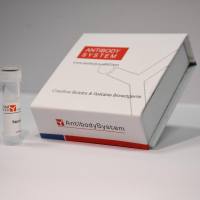Many events in the viral life cycle involve protein binding to defined sequences on the viral chromosome. Chromatin immunoprecipitation allows the detection of the in vivo interaction of specific proteins with specific genomic regions. In this technique, living cells are treated with formaldehyde to crosslink neighboring proteinprotein and proteinDNA molecules. The crosslink with formaldehyde is reversible and covers a short distance (2 �); the components that are crosslinked are therefore in close proximity. Nuclear fractions are isolated, and the genomic DNA is sheared to reduce the average DNA fragment size to around 500 bp. These nuclear lysates are used in immunoprecipitations with an antibody against the protein of interest. The DNA bound to the studied protein is enriched after the immunoprecipitation. After reversal of the crosslinking, the resulting DNA and proteins can be independently studied.
The electrophoretic mobility shift assay provides a rapid method to study DNA-binding protein interactions in vitro. This assay is based on the observation that complexes of protein and DNA migrate through a nondenaturing polyacrylamide gel more slowly than free DNA fragments. The assay is performed by incubating a purified protein, or a complex mixture of proteins, with a 32 P end-labeled DNA probe containing the protein-binding site. The reaction products are analyzed on a nondenaturing polyacrylamide gel. The specificity of the DNAbinding protein for the putative binding site is established by competition experiments using specific and nonspecific nonradiolabeled DNA probes. The components of the complexes can be identified with antibodies to the protein of interest.






